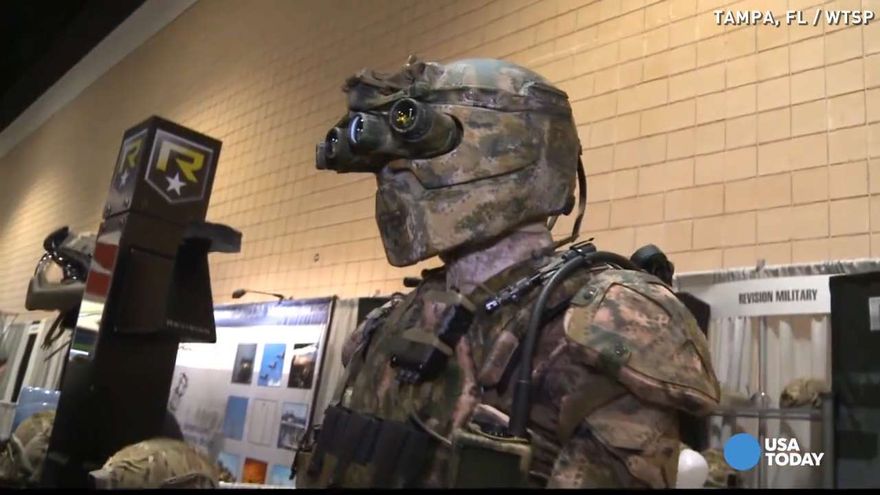
Background and project issues:
Special Operations Command in 2013 introduced the world to its tactical assault light operator suit concept via a widely disseminated YouTube animated video of a hulking human figure bursting through a door as bullets pinged off its metallic skin. The press immediately dubbed it the "Iron Man suit."
Then SOCOM leader Navy Adm. William McRaven said the program's goal was to protect commandos entering buildings during raids. [...] He managed to have $80 million over four years allocated toward the effort and gave technologists until 2018 to deliver a working prototype.
Powering the suit, allowing the operator freedom of movement and view screens that don't have latency issues are three of the main challenges, said Anthony Davis, director of science and technology at SOCOM.
Exoskeletons consume power based on a wide variety of factors having to do with what function they are performing in operation and how much they weigh. For instance, running consumes more energy than standing still, and a heavier exoskeleton will consume more energy to move than a lighter exoskeleton. The power hurdle is particularly challenging because missions that are only expected to last minutes or hours can sometimes extend for days.
A 500-pound armored exoskeleton may stop a 7.62 mm armor-piercing bullet, but is not agile enough to operate in mountainous, littoral or riverine environments. And while a 500-pound exoskeleton can stop the penetration of a 7.62 mm bullet, that same armor cannot protect the soldier from a rocket-propelled grenade, larger caliber munitions or improvised explosive devices.
SOCOM officials said from the beginning that in order to put the technology into the field as soon as possible, the program was forgoing traditional acquisition practices, and reaching out to labs and private companies that don't normally work with the military.
SOCOM has a staff of almost 30 working full time on the TALOS project, Davis said. Twelve of them are Army and Navy special operators who have recently returned from battlefields.



So how secure is there programming in a Stuxnet world? This suit could then become a mechancial straight-jacket best utilized in a dungeon. Or is it like a personal Osprey type of thing? Kind of saying the same thing, right?